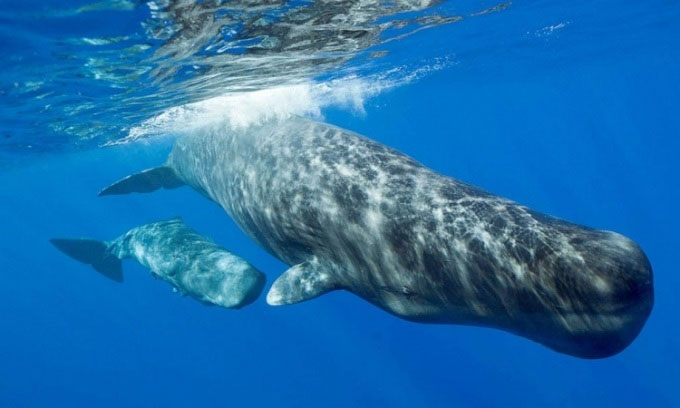Researchers Discover Sperm Whales Taught Each Other to Attack Whaling Ships by Ramming Them in the 19th Century.

Sperm whales have large heads. (Photo: ABC)
Hal Whitehead, a professor of Biology at Dalhousie University, and his colleagues reached this conclusion while studying the logbooks of whaling ships from the early 19th century. Whaling was a booming industry in the United States during this time. Ships set sail from ports in New England, traveling around the world to hunt and kill whales for oil production.
However, a group of whaling ships in the North Pacific during the 1820s encountered difficulties with sperm whales, as their harpoons were not effectively incapacitating the animals. Records from the ships described how the whales evaded harpoons during the several years that sailors spent in those waters. According to Whitehead, this evidence suggests that whales can change their behavior rapidly within just 2-3 years of exposure to whaling ships.
To defend against predators like orcas, sperm whales typically gather in large groups, forming a tight defensive circle. However, this strategy was ineffective against humans, leading them to adapt their tactics. After being attacked by sailors, sperm whales began to swim swiftly with the current and dive deep to evade the reach of the ships. Whitehead discovered that they started to directly attack whaling ships by ramming them with their heads. The only explanation for this behavior is that sperm whales communicate and learn from each other.
“When sperm whales dive deep and then surface, they can escape from whaling ships. The sailors have to wait for the animal to reappear, but it surfaces at a distance of several kilometers away. Sperm whales also have large jaws, enabling them to ram directly into whaling ships,” Whitehead explained.
Sperm whales communicate with each other through sounds similar to clicks. This is the loudest sound produced by any animal. Sperm whales can hear these sounds and recognize one another.


















































